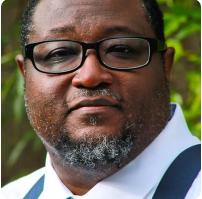by Deven Black

Photo credit: glassdoor.com/blog
I started working for pay when I was sixteen. By that time I’d worked on or managed several political campaigns for offices ranging from the NY State Assembly to President of the US and had dropped out of high school, twice. Two slightly-older friends and I started a small newsletter covering New York City politics and that led to a job as a program producer at an independent non-profit radio station in the city.
In the ensuing three decades, after dropping out of college, I helped organize mothers receiving public assistance, worked as a radio news producer, a newspaper reporter, a radio newsman, a radio talk-show host, taught at an alternative public high school, tended bar, did voice-overs for commercials and industrial films, wrote advertising, became a restaurant manager, got married, got a college degree and started teaching at my alma mater.
Of all that, the only thing I planned to do was get the college degree and I waited until, at age 40, found the right college to suit my way of learning and thinking.
Eventually I left restaurants and had a kid. While I was trying to figure out what I wanted to do next I started hanging around my son’s elementary school while they had their all-school morning meeting, The principal noticed how kids of all grades kept approaching me (and not the other parents there) and how I interacted with the students. He suggested that I become a substitute teacher while I figured out what I wanted to do next.
A year later I enrolled in the Fordham University Graduate School of Education in order to become a special education teacher. A month before my 51st birthday I started working for the NYC Department of Education as a special education elementary school writing teacher.
I thought that was what I would do for the rest of my working life.
I didn’t even do that for the rest of the week. My principal must have heard of my checkered work-history because in the course of my first year teaching I was assigned as the teacher of a 4th grade self-contained special ed class for six weeks, the same with a 5th grade class for six weeks, then the writing teacher for those two classes (what I thought I was hired to be) before spending the last four months of the school year as the teacher-cum-referee for a small group of occasionally violent emotionally disabled 5th grade students.
Since then I taught second grade science and fifth grade social studies one year before moving to a middle school where I taught sixth grade for two years, READ 180 for two years, before starting this year as a 7th & 8th grade social studies teacher.
One Friday in early December my principal asked me if I’d ever thought of being a librarian. By Tuesday I was one. To stay one I have to get an MLS degree, and I need 18 credits of it by the end of August. Grad school!!!
The funny part of all this is that no one who knows me thinks of me as a flexible person.
What is the key to my ability to adapt to changing requirements, changing assignments and changing careers? Curiosity and knowledge.
I have always wanted to know everything. For about five minutes in my life it seemed possible. The impossibility of knowing everything has not deterred me from trying to learn as much as possible about as much as possible.
My curiosity allowed me to recognize that everything in my life, the schooling, the wandering, the violence and the seeming aimlessness, has been an opportunity for learning.
And all that learning has added up to a holistic view of the world. To me, the world is one. We are all interconnected on such deep levels that what appear to be national, racial or any other differences among us are relics of our imaginations or illusions much like mirages.
Where others might say I’ve had a variety of careers all I see is one, the career of being me.
I’ve just been me in different venues at different times; the expression of me has varied but the essence has not.
I don’t recommend that anyone else try to be me or live the kind of life I’ve lived. But I do recommend that you live your life with the curiosity, the exploration and the passion I’ve filled mine with.

Deven Black is a student of life. He was born and raised in Manhattan in New York City and after dropping out of high school used that as a learning laboratory. At the age of 50 he became a teacher and in the process that throughout his life he’s been both teacher and student simultaneously. He sees no reason to change anything now.















